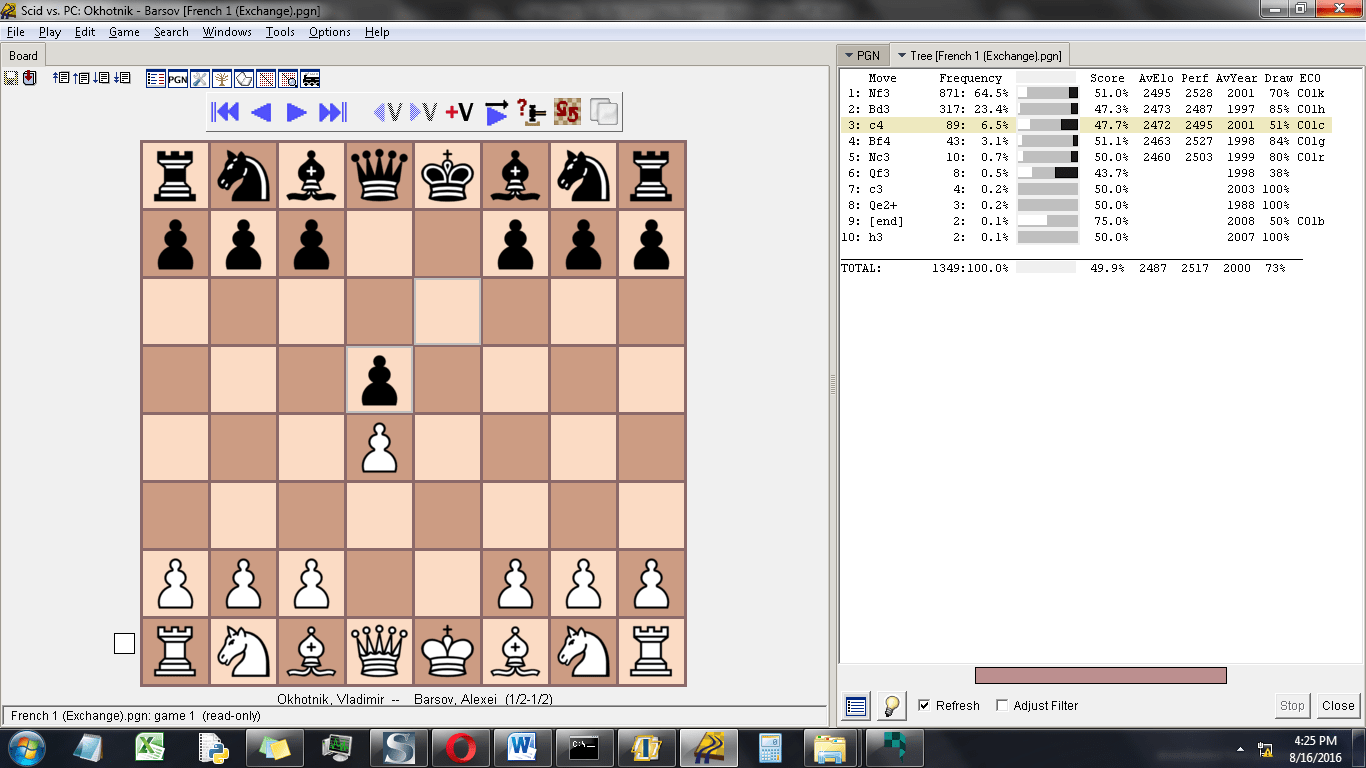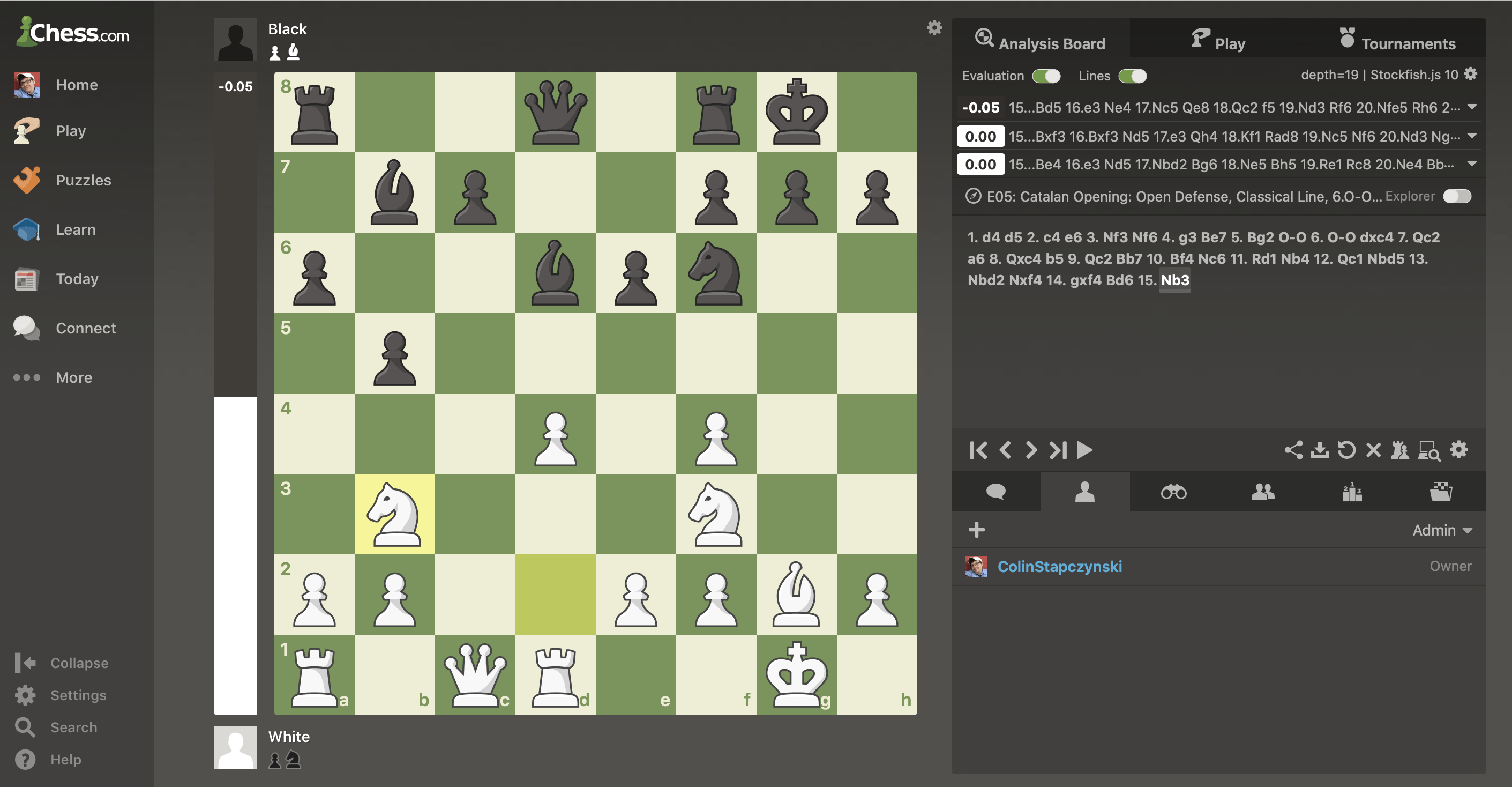

"The NNUE branch maintained by has demonstrated strong results and offers great potential, and we will proceed to merge. In July 2020 chess news reported that Stockfish NNUE had "broken new ground in computer chess by incorporating a neural network into the already incredibly powerful Stockfish chess engine." A NNUE merge into Stockfish was then announced and development builds became available. In June 2020, an efficiently updatable neural network (NNUE) fork introduced by computer shogi programmers called Stockfish NNUE was discussed by developers. In Stockfish 7, Fishtest author Gary Linscott was added to the official list of authors in acknowledgement of his contribution to Stockfish's strength.Īs of September 2022, the framework has used a total of more than 8000 years of CPU time to play over 4.7 billion chess games.
Using stockfish chess engine software#
Tests on the framework are verified using the chi-squared test, and only if the results are statistically significant are they deemed reliable and used to revise the software code.Īfter the inception of Fishtest, Stockfish experienced an explosive growth of 120 Elo points in just 12 months, propelling it to the top of all major rating lists.

Using stockfish chess engine code#
Ĭhanges to game-playing code are accepted or rejected based on results of playing of tens of thousands of games on the framework against an older "reference" version of the program, using sequential probability ratio testing. Since 2013, Stockfish has been developed using a distributed testing framework named Fishtest, where volunteers can donate CPU time for testing improvements to the program. An official repository, managed by a volunteer group of core Stockfish developers, was created soon after and currently manages the development of the project. On 18 June 2014 Marco Costalba announced that he had "decided to step down as Stockfish maintainer" and asked that the community create a fork of the current version and continue its development. The last Glaurung version (2.2) was released in December 2008.Īround 2011, Romstad decided to abandon his involvement with Stockfish in order to spend more time on his new iOS chess app. For a while, new ideas and code changes were transferred between the two programs in both directions, until Romstad decided to discontinue Glaurung in favor of Stockfish, which was the more advanced engine at the time. The first version, Stockfish 1.0, was released in November 2008. He named it Stockfish because it was "produced in Norway and cooked in Italy" (Romstad is Norwegian, Costalba is Italian). Four years later, Costalba, inspired by the strong open-source engine, decided to fork the project. The program originated from Glaurung, an open-source chess engine created by Romstad and first released in 2004. Release versions and development versions are available as C++ source code and as precompiled versions for Microsoft Windows, macOS, Linux 32-bit/64-bit and Android. Both and Lichess provide Stockfish in this form in addition to a server-side program. Stockfish can be compiled to WebAssembly or JavaScript, allowing it to run in the browser. Other Stockfish-compatible graphical user interfaces (GUIs) include Fritz, Arena, Stockfish for Mac, and P圜hess. On mobile, it has been bundled with the Stockfish app, SmallFish and Droidfish. On desktop, it is the default chess engine bundled with the Internet Chess Club interface programs BlitzIn and Dasher. Stockfish has been a very popular engine on various platforms. In 2018 support for the 7-men Syzygy was added, shortly after becoming available. The Syzygy tablebase support, previously available in a fork maintained by Ronald de Man, was integrated into Stockfish in 2014. Stockfish supports Chess960, which is one feature that was inherited from Glaurung. As of July 2022, Stockfish 15 (4-threaded) achieves an Elo rating of 3540 +16 Compared to other engines, it is characterized by its great search depth, due in part to more aggressive pruning and late move reductions. Stockfish implements an advanced alpha–beta search and uses bitboards. The maximal size of its transposition table is 32 TB.

Stockfish can use up to 1024 CPU threads in multiprocessor systems.


 0 kommentar(er)
0 kommentar(er)
